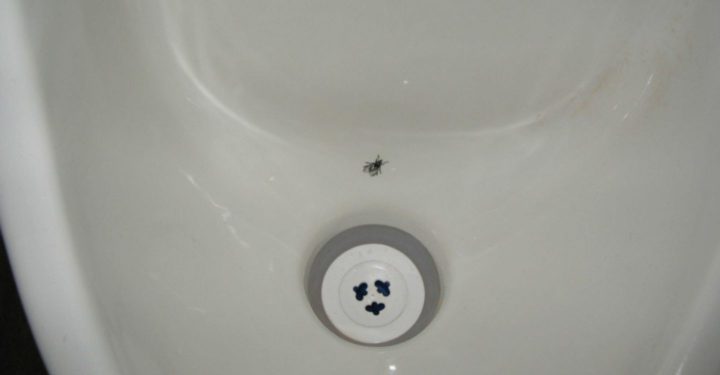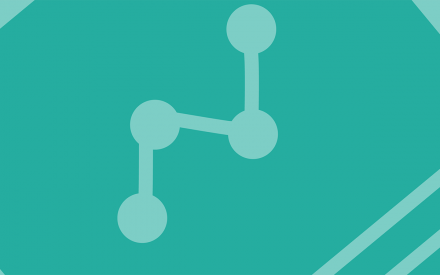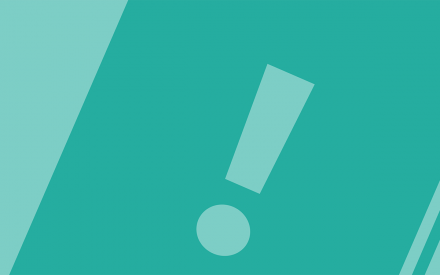Last week I signed-up to undertake a ‘Masterclass in Nudging’. When I spoke with the wonderfully courteous staff to make my booking I was asked if I had any previous knowledge of nudging, to which I was tempted to reply: “Well, I’ve aimed my wee at a fly…”. The fly in the urinal in one of the most well-known examples of nudging to reduce ‘inaccuracy’ in mens toilets.
I didn’t say this, obviously. Instead, I gave the more considered response about my experience of working in the English NHS and using the EAST model developed by the UK ‘Nudge Unit’, of reading the book ‘Nudge’ by Thaler and Sunstein, and of applying elements of this approach to my work in Denmark. However, I was keen to deepen my knowledge and develop a broader set of tools for me to apply to my teaching and quality improvement work here in Denmark. Dull, I know.
So why should I be so keen to know more about this subject? Well, even a cursory scan of the healthcare literature will highlight a growing body of articles focusing on the use of ‘nudging’, or ‘behavioural economics’, as it is more formally known in healthcare. But even beyond the gilded paper walls of peer reviewed journals, we can feel nudges in many different places, such as workshop sessions at the recent IHI international conference (‘Nudging Patients and Providers to Improve Quality’), and the mainstream press, cf. https://www.nytimes.com/2017/04/13/upshot/answer-to-better-health-care-behavioral-economics.html
Nudge Units
According to Richard Thaler and Cass Sunstein, two of the foremost thinkers in nudging, Nobel prize winner (Thaler) and authors of the book ‘Nudge, improving decisions about health, wealth, and happiness (2008, p. 6), a nudge is
“any aspect of the choice architecture that alters people’s behavior in a predictable way without forbidding any options or significantly changing their economic incentives. To count as a mere nudge, the intervention must be easy and cheap to avoid. Nudges are not mandates. Putting the fruit at eye level counts as a nudge. Banning junk food does not”.
The book has become one of the most quoted and influential books in social sciences in the past few years, and the popularisation of behavioural economics in the form of relatively straightforward experiments has paved the way for a successful age of direct implementation in policymaking, as testified to by the proliferation of ‘Behavioural Insights Teams’ (aka ‘Nudge Units’) in the governments of many countries around the world.
In practice, much of behavioral economics consists of using psychological insights to influence behaviour. These interventions tend to be small, often involving subtle changes in how choices are presented, for example, whether you have to “opt in” to be an organ donor versus having to “opt out.”
In a recent blog by Lord Darzi, surgeon and director of The Institute of Global Health Innovation, he clarifies how behavioural insights could be applied in the field of cancer screening. Nine out of ten people say they think screening is worthwhile yet coverage rates remain low. In England in 2015 they were 57 per cent for bowel screening and 73.5 per cent for cervical screening against targets of 75 and 80 per cent.
One approach to boost screening is to identify subsets of non-attenders – for instance retired men, who consider themselves at low risk for developing bowel cancer – and link the screening test to other procedures that may be more familiar, such as dental checkups or vehicle MOTs (“You check the pipes in your car, what about the one in your body?”). Companies making feminine hygiene products might be enlisted to promote smear tests.
The application of behavioural economics in healthcare is nicely summarized in a paper by Ben Voyer (2015) called: ‘Nudging’ behaviours in healthcare: insights from behavioural economics. In the article he offers a critical perspective on the topic and discusses how the application of behavioural economics can foster innovative healthcare management. However, he also reviews some of the methodological aspects of applying behavioural economics principles, along with some of the limitations within the field: https://www.magonlinelibrary.com/doi/abs/10.12968/bjhc.2015.21.3.130
The role of ‘Nudge Units to Improve the Delivery of Health Care’ is explored in a paper by Patel et al (2018) from Penn University, Center for Health Incentives and Behavioral Economics (CHIBE): https://www.nejm.org/doi/full/10.1056/NEJMp1712984. Whilst Jerry Avon provides an interesting perspective on the potential use of ‘nudging’ specific to medicine: ‘The Psychology of Clinical Decision Making — Implications for Medication Use’ in NEJM (https://www.nejm.org/doi/full/10.1056/NEJMp1714987). For a more practical guide focusing specifically on the financial aspects of healthcare delivery, the Health Foundation produced: Behavioural insights in health care; Nudging to reduce inefficiency and waste https://www.health.org.uk/publications/behavioural-insights-in-health-care
Nudging in Denmark
Denmark has also felt a ‘nudge’ or two over recent years. Not least in the growth of consultancy companies led by people such as Pelle Guldborg Hansen, Morten Munster and Sille Krakow, as well as academic departments at Roskilde University, University of Southern Denmark and Copenhagen Business School (led by Prof Lucia Reich, a collaborator of Cass Sunstein).
Their impact can be felt within the Danish healthcare system, for example, Sille Krakow has been working with Århus hospital to increase better patient flow and satisfaction (https://www.krukow.net/auh) and Pelle Hansen has been involved in reducing alcohol consumption in young people (https://inudgeyou.com/en/anchoring-effect-alcohol-consumption/). However, the area which has received the most attention is that of diet, for example, the European wide collaborative involving CBS which aims to better understand decision-making in food choice and to build predictive models to contribute to improving public health. This work has produced a feast of resources such as peer reviewed papers, book chapters, conference abstracts, etc. which can be banqueted upon here: https://www.nudge-it.eu/.
Recent articles using ‘nudging’
In this month’s Faglig Nyt we include a recent example of using behavioural economic theory in healthcare by Rao & Nyquist (2018) who explore the power of the nudge to decrease decision fatigue and increase influenza vaccination rates (https://jamanetwork.com/journals/jamanetworkopen/fullarticle/2702208?resultClick=1) However, the recent months have seen many more examples, such as:
- Zhang et al (2018) How to Combat the Opioid Epidemic, 1 Nudge at a Time: https://jamanetwork.com/journals/jamasurgery/article-abstract/2688230?resultClick=1
- Soler et al (2018) Nudging to Change: Using Behavioral Economics Theory to Move People and Their Health Care Partners Toward Effective Type 2 Diabetes Prevention: http://spectrum.diabetesjournals.org/content/31/4/310
- Soon, et al (2018) The effect of two behavioural ‘nudging’ interventions on management decisions for low back pain: a randomised vignette-based study in general practitioners investigated whether embedding nudges in a general practitioner (GP) clinical decision support display could reduce low-value management decisions in lower-back pain management decisions: https://qualitysafety.bmj.com/content/early/2018/11/19/bmjqs-2018-008659
- O’Reilly-Shah et al (2018) Variable effectiveness of stepwise implementation of nudge-type interventions to improve provider compliance with intraoperative low tidal volume ventilation: https://qualitysafety.bmj.com/content/27/12/1008
So, I’m looking forward to my nudging ‘masterclass’, and I hope to be better equipped to apply some tips and tricks as part of my work in healthcare, and perhaps even in my daily life. And the next time we see a fly in the urinal (gents), or information on the side of feminine hygiene product promoting a smear test (ladies), we should try to remember, it’s just a nudge. It won’t harm us, but it might just make our lives a wee bit better…
Fagligt Nyt om patientsikkerhed er et nyhedsbrev, der udgives af PS!, og som udkommer ca. 6 gange årligt. Det formidler nyt om de seneste nationale og internationale forskningsresultater, begivenheder, trends og meninger inden for patientsikkerhed.
Tilmeld dig Fagligt Nyt
For more information about behavioural economics try:
International resources
Penn University, Center for Health Incentives and Behavioral Economics – https://chibe.upenn.edu/
Behavioural scientist – http://behavioralscientist.org/topics/health/
Behavioural Insights Team (UK Cabinet Office) – https://www.behaviouralinsights.co.uk/category/health/
Danish resources
iNudgeyou – The Applied Behavioural Science Group: www.inudgeyou.com
TEN – The European Nudging Network www.tenudge.eu
DNN – The Danish Nudging Network www.danishnudgingnetwork.dk
Morten Munster – https://mortenmunster.com/
Sille Krokow – https://www.krukow.net/




